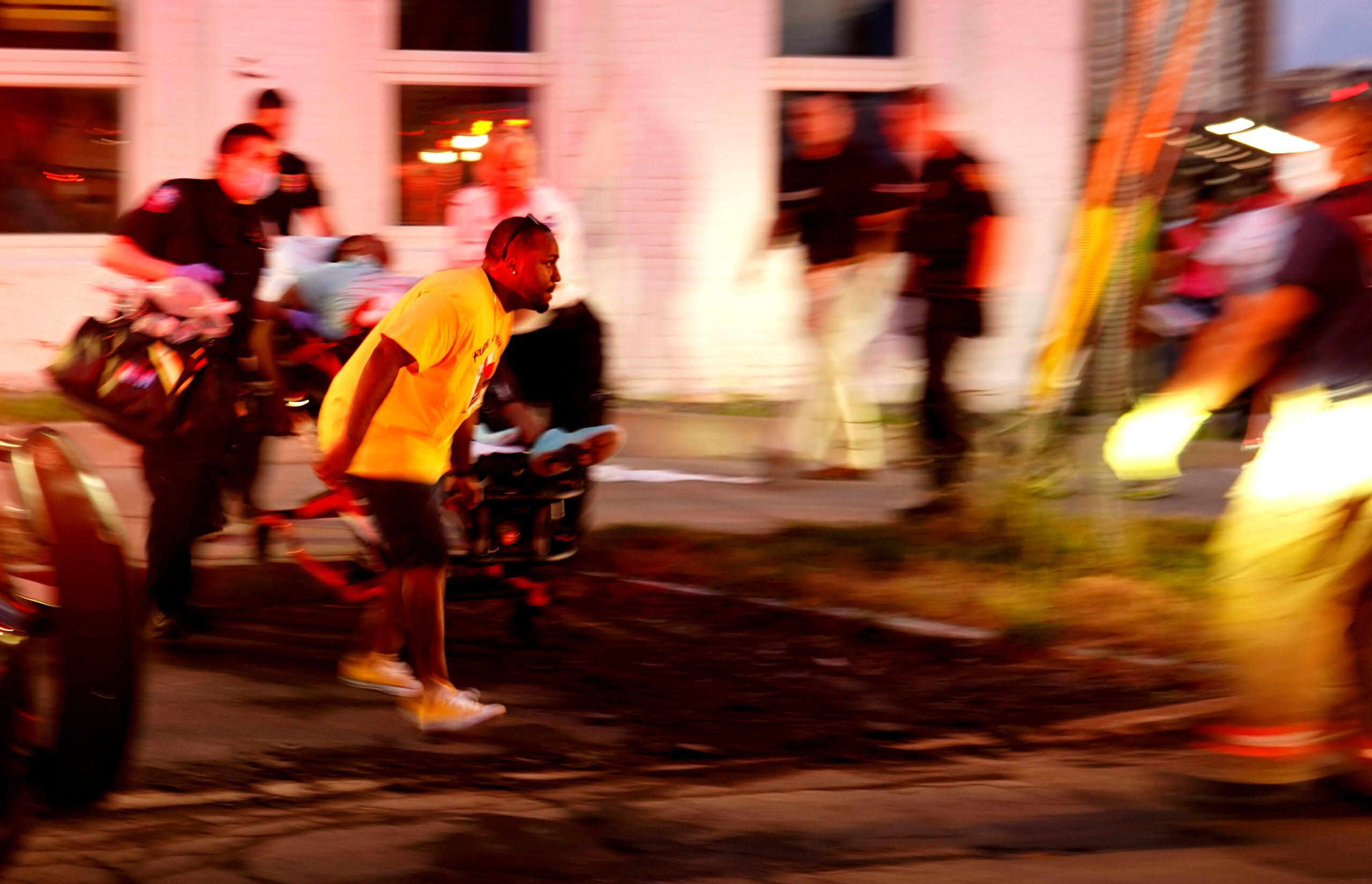What To Know Today
In three major American cities, so-called contagious shootings increased last year. That’s according to a new paper looking at the pandemic surge in gun violence in Chicago, Los Angeles, New York, and Philadelphia. Previous research has found that gun violence incidents can have contagion effects — that is, shootings sometimes lead to more violence through a combination of social factors, like pressure to retaliate. Writing in the Journal of Criminal Justice, scholars compared data in the four cities from 2016 through 2020. They found that contagious shooting events increased from 2019 to 2020 in Chicago (14 percent to 19 percent); Los Angeles (21 percent to 31 percent); and Philadelphia (28 percent to 33 percent). In New York City, they slightly decreased; the researchers said more study would be needed to figure out why, but suggested investigating “changes in social dynamics” like gang organization and the availability of certain weapons. Overall, however, the majority of shootings in all cities remained noncontagious — isolated, spontaneous, or related to the social environment. The researchers also found that over the five years in question, geographic shooting hotspots in cities stayed relatively consistent. What are the policy implications? The authors write that contagious violence may be tackled in the short term through focused disruption efforts, but point out that that alone is unlikely to quell a surge mostly fueled by noncontagious shootings, which are often propelled by deeper systemic issues: “To the extent that the surge in 2020 was tied to routine activities unique to the pandemic, a return to ‘normal life’ might help cities naturally reverse course. If structural changes underlying the surge have become more embedded, then it may take a considerable period of time to return to the conditions that prevailed before 2020.”
Washington, D.C., Police say they’re recovering more devices that convert guns to fire on fully automatic. So-called auto sears allow semiautomatic guns to illegally fire at far faster rates. “I think everybody in our department is very concerned about it,” a D.C police commander told The Washington Post, warning about the growth in recoveries. Police say they have only recently begun tracking auto sears and don’t have an official estimate of how many are on the city’s streets, but a special agent at the ATF said the agency seized 20 devices in the first half of this year — double the number in the same period in 2020.
The VA has a new ad campaign targeting gun suicides. Ahead of National Suicide Prevention Week, which runs through Saturday, the government agency released a new campaign encouraging gun-owning veterans with suicidal ideation to use firearm locks. “And though it may seem like a small barrier, a simple lock puts space between the thought and the trigger,” the ad’s narrator says. While Americans who die by suicide use a gun in about 50 percent of cases, the number rises to 70 percent for veterans. [If you are having thoughts of suicide, help is available 24 hours a day: Call the National Suicide Prevention Lifeline at 1-800-273-8255 or text 741741 to reach the Crisis Text Line.]
Comment period ends on proposal to regulate pistol-stabilizing braces. The Department of Justice in June proposed cracking down on the devices that effectively turn AR pistols into short-barreled rifles. The 90-day comment period ends today. Under the new rules, pistol owners seeking to use a stabilizing brace would have to file an application with the ATF, undergo extensive vetting, pay a $200 tax, and register the weapon with the federal government. Violations could result in a 10-year prison sentence. From The Trace: If adopted, the rule would require brace owners to apply to the ATF’s NFA Division, which has long been understaffed and misses its own performance benchmarks.
Data Point
5.3 percent — the year-to-date increase in shootings in New York City compared to the same time in 2020. While the current level of shooting incidents are above last year’s already historic increase, there are signs the rate of increase is slowing. Meanwhile, the year-to-date homicide rate is down 1.3 percent compared to 2020. [New York Police Department]

